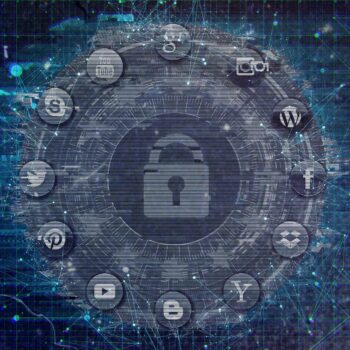
In the case of social engineering attacks, analytics can identify much faster and minimize damage. Training and security tools alone are not enough. Analytics can complete a defense strategy against social engineering.
Social engineering has always been a major threat to every internet user, both as an individual or as part of a company. Cyber criminals know that humans are the weakest link in the security chain and are increasingly relying on social engineering attacks to compromise systems and networks and gain access to sensitive data. In contrast to machines and security software, we humans tend to make incorrect assessments and quite easily make wrong decisions. Until now, the best way to prevent social engineering attacks on networks was to train employees and use endpoint security tools.
But as has been shown since the beginning of the corona crisis, social engineering attacks are more successful than ever. Training and defense tools do not seem to have made you that much safer. Accordingly, the security officers in many companies are looking for ways to better protect the human insecurity factor against cunning fraud. Modern security solutions based on User and Entity and Behavior Analytics (UEBA) can help here.
Techniques used today
At a certain point in a social engineering attack on corporate networks there are often phishing, spear-phising or whaling via email: The tricky attacks are usually constructed in such a way that they arouse the attention of a victim and call them to take action. Attackers often use logos, images and fonts to simulate the identity of an organization. This creates the impression that the message came from a work colleague, the victim's bank, or some other official channel. Most phishing messages convey a sense of urgency. This leads the victim to believe that if they fail to provide sensitive information quickly, there will be negative consequences. For example, the bank could threaten to block the bank card.
Even if you are on your guard and recognize phishing emails you have written yourself in your inbox, you are not safe. So-called watering hole attacks can be launched from legitimate websites that are frequently visited by the victims of the attacks. Compromised websites then install a backdoor Trojan on the end device, for example. This then enables the attacker to remotely control the victim's device.
In the case of social engineering attacks: identify, mitigate or prevent
Criminals almost always have the advantage of surprise. And many attacks, especially targeted attacks on individual executives in the company, are cleverly engineered and hardly recognizable at first glance. Numerous successes of social engineering attacks, especially after the beginning of the corona crisis, now show that a defense strategy with training and endpoint security is not enough. On the one hand, too many attacks slip through the defense network and, on the other hand, the strategy does not offer the possibility of quickly identifying successful attacks in the post-breach phase. In this way, the perpetrators can often stay in the network for a long time without hesitation, exfiltrate data in peace and quiet and cause considerable damage. So it's not just about defense, but also about detection after a successful initial attack - and thus about mitigating the consequences. Here, analytics can complement training and security tools.
SIEM and UEBA can increase security
SIEM systems (Security Information and Event Management), which are based on user and entity behavior analytics (UEBA), collect security events and logs from the entire organization and thus model the normal user behavior of individuals, groups, and end devices. If behavior is found that deviates too far from these models, a warning is sent to the security team for immediate investigation. This mismatch could be anything from a user clicking their way through to an unusual destination on the web to a malicious process running on a user's device.
A SIEM system addresses the key processes of cybersecurity and provides a complete solution for detecting advanced threats. Functions include automating log monitoring, correlating data, recognizing patterns, alerting and providing data for rapid Decision making, compliance and forensics. UEBA detects security incidents that are not recognized by traditional tools because they do not comply with predefined correlation rules or attack patterns or because they extend over several organizational systems and data sources. Together, SIEM and UEBA help detect social engineering attacks as soon as they happen and react quickly to prevent or minimize damage.
Conclusion: better secured with analytics
It's true: by investing in regular training and the right technological solutions, much of the threat posed by social engineering attacks can be mitigated or even eliminated. Nevertheless, sophisticated attacks manage to bypass these defense mechanisms time and again and cause damage. SIEM systems based on User and Entity Behavioral Analysis (UEBA) are a complete solution for detecting and countering advanced threats. Companies that previously only relied on training and endpoint security solutions to prevent social engineering attacks on their workforce should consider these modern security tools in order to significantly increase their security.
More on this at Exabeam.com[starboxid=17]
